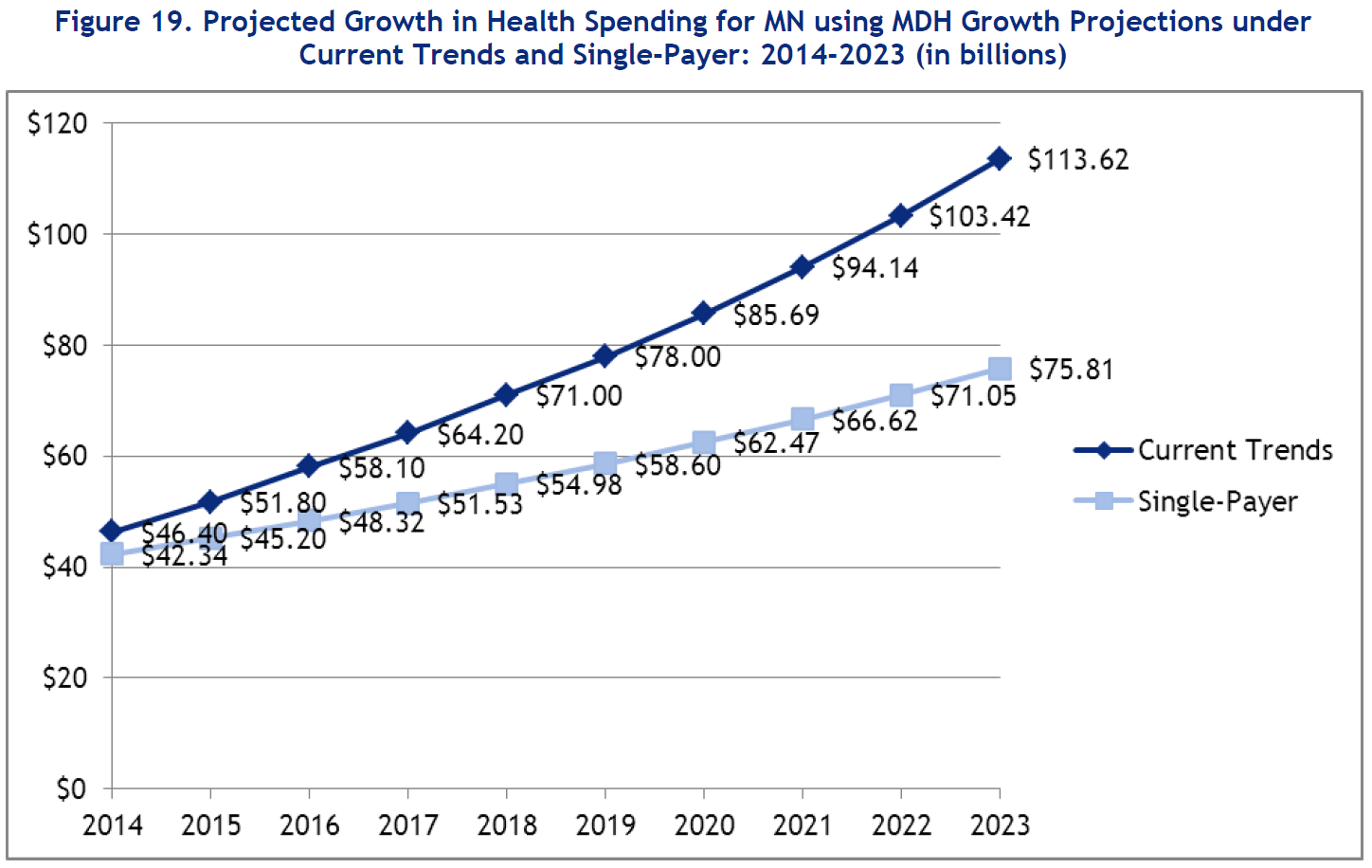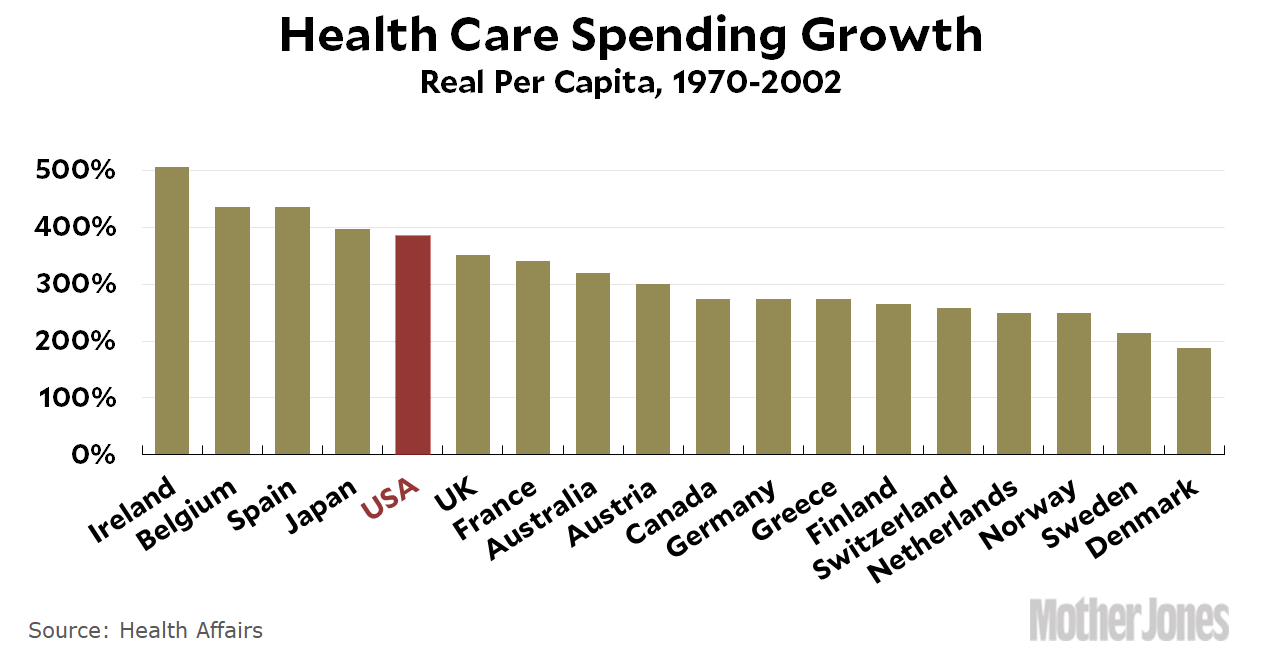A couple of days ago I tossed off a late-night post pointing out that health care is expensive, so it’s hardly surprising that estimates of California’s proposed single-payer plan have clocked in at a net additional cost of around $200 billion. That was pretty much my only point, but this post caused quite a…stir…on Twitter from the usual suspects, who were outraged that I hadn’t assumed single-payer would radically slash medical costs. Today, Jon Walker provides a more measured version of the argument:
It is critical to address this weird claim from Drum because the idea that single-payer would cut health care costs isn’t some optimistic liberal talking point. It is a near universal assumption and the main reason achieving single-payer has politically been so difficult. It is the heart of the whole debate.
Again, this is not a liberal idea. The Lewin Group, a health care consulting firm owned by UnitedHealth Group, has repeatedly concluded that single-payer would cut health care costs. For example, they analyzed a single-player plan for Minnesota and concluded, “that the single-payer plan would achieve universal coverage while reducing total health spending for Minnesota by about $4.1 billion, or 8.8 percent.” It reached the same basic conclusion looking at a national single-payer plan in years past.
As it happens, I’ve found Lewin Group estimates in the past to be a little optimistic, but set that aside. I put the ballpark additional cost of national single-payer health care at $1.5 trillion, but if someone wants to assume it would be $1.36 trillion instead, that’s fine. That’s still in the ballpark. More important, though, is this chart, which accompanies that Lewin report on Minnesota:

This is basically right. As I mentioned in the original post, “If we’re lucky, a good single-payer system would slow the growth of health care costs over the long term, but it’s vanishingly unlikely to actually cut current costs.” And that’s pretty much what Lewin shows. The initial cost saving is small, but the cost containment measures inherent in a government-funded plan push the cost curve down over time. Their estimate is that within a decade Minnesota’s proposed plan would have been a third less expensive than business-as-usual. This is roughly what I’d expect for a national single-payer plan too.
Is it technically possible to cut initial spending more? Sure. We could nationalize the whole medical industry, cut nurse and doctor pay by a third across the board, and create a mandatory formulary for drugs at a tenth of the price we currently pay. When the revolution comes, maybe that will happen—and doctors and pharma executives will be grateful we didn’t just take them out and shoot them. In the meantime, I’m more interested in real-world movements toward single payer. Obamacare was a good start. Adding a public option would be another step. Medicare for all might be next. And something better than Medicare would be the final step. That will be hard enough even if we don’t make mortal enemies out of every single player in the health care market.
In broad terms, if we adopted national single-payer health care today it would cost us something like an additional $1.5 trillion in taxes. That’s reality, and as a good social democrat I’m fine with that. In theory, after all, my taxes might go up 30 percent, but Mother Jones will also increase my salary 30 percent because they no longer have to provide me with health insurance. Roughly speaking, this would be a good deal for half the country, which pays very little in income taxes; a wash for another third; and a loss for the top 10 percent, whose taxes would go up more than the cost of the health insurance they currently receive. If we decide to tax corporations instead of individuals, the incidence of the tax would pass through to individuals in a pretty similar way.
So that’s that. I don’t believe in Santa Claus, and I don’t believe that we can pass a bill that slashes health care costs to European levels. They’ve had decades of cost containment that got them to where they are. We, unfortunately, haven’t, so we have to start with our current cost structure. One way or another, that’s what we have to deal with.









